Key takeaways:
- Effective conflict resolution involves understanding underlying emotions and creating a safe space for open dialogue.
- Common business conflicts often arise from miscommunication, personality clashes, and unclear roles.
- Techniques such as active listening, mediation, and emphasizing shared goals can transform conflicts into opportunities for collaboration.
- Training programs that focus on open communication, active listening, and emotional intelligence are crucial for fostering a constructive conflict resolution culture.
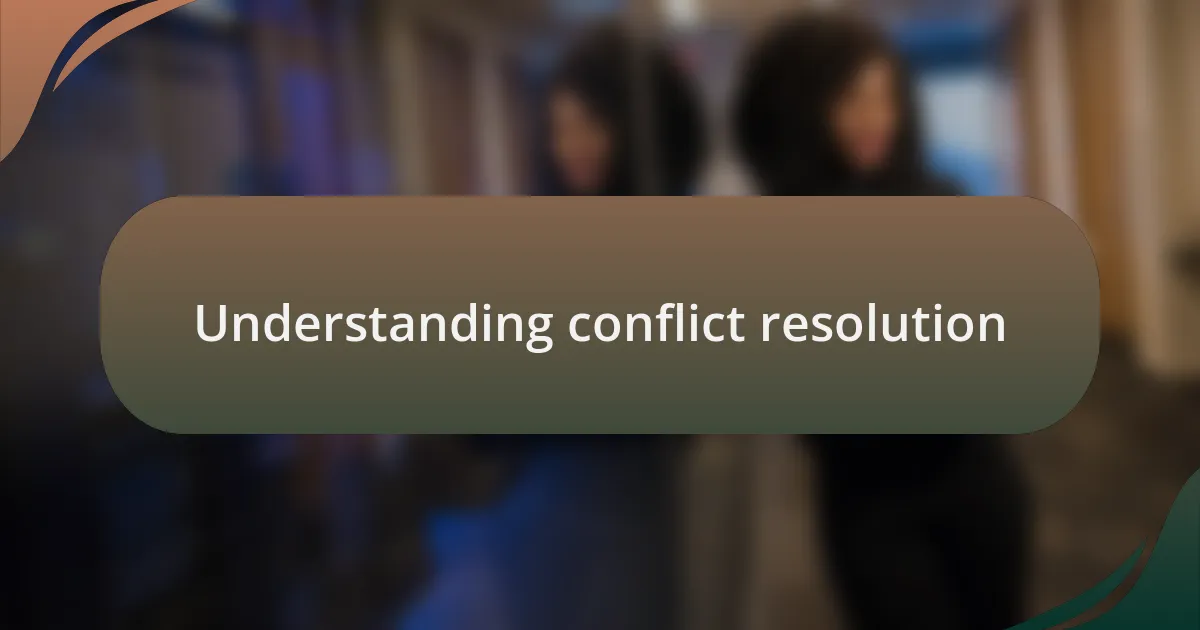
Understanding conflict resolution
Conflict resolution is often misunderstood as merely finding a way to end a disagreement. In my experience, it’s more about understanding the underlying emotions and motivations that drive individuals during a conflict. Have you ever found yourself in a heated discussion where you realized that the real issue was rooted in something deeper than the topic at hand?
When I reflect on my own encounters with conflict, I see how critical it is to listen actively. There was a time when a miscommunication escalated between two team members, and by simply encouraging open dialogue, I discovered that the root cause was not just different opinions but a lack of understanding and respect for each other’s perspectives. This experience highlighted for me that conflict resolution involves creating a safe space for people to express themselves.
Ultimately, I believe that effective conflict resolution is an art that requires patience and empathy. It’s not just about reaching a compromise but about fostering an environment where individuals feel valued and heard. Can you relate to the feeling of frustration that comes when you realize that the solution isn’t addressing the core issue? This realization can drive us to seek better techniques, transforming conflict into an opportunity for growth and understanding.
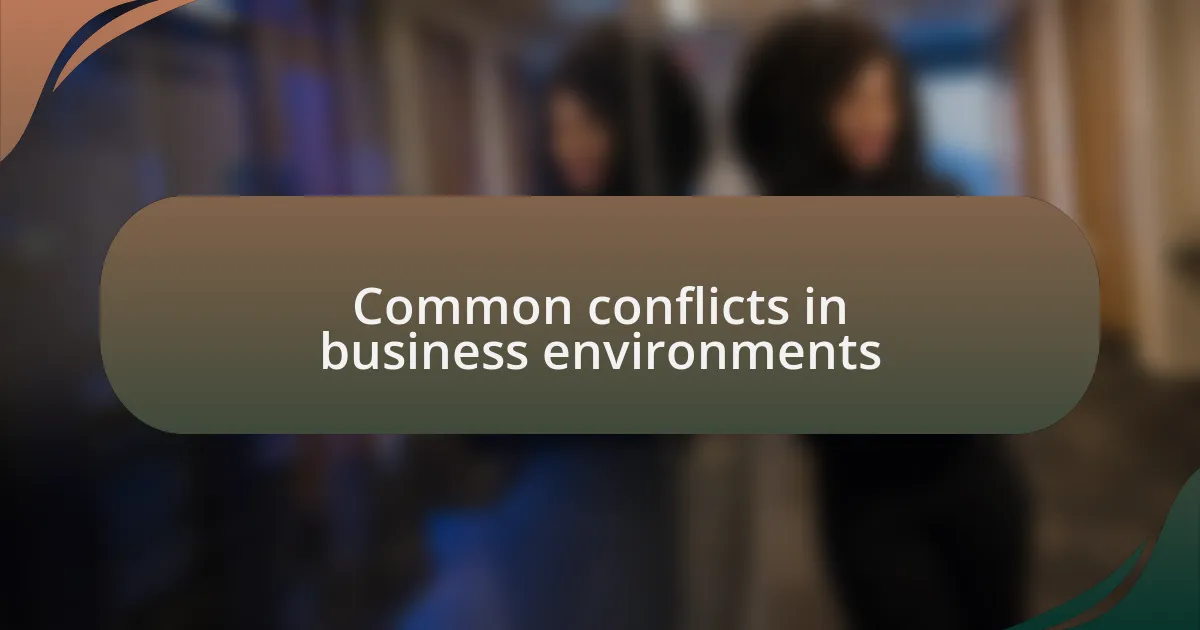
Common conflicts in business environments
In the business environment, conflicts often arise from miscommunication, differing priorities, or competition for resources. I recall a situation where my team was divided over project deadlines, leading to tension and delays. It was a classic case of misunderstanding, where simply clarifying expectations could have bridged the gap and restored harmony.
Another common conflict stems from personality clashes. I once worked with a colleague whose working style was vastly different from mine. Instead of seeking a compromise, we often found ourselves at odds. It took a candid conversation to realize that, while our approaches differed, we both shared a common goal – the success of our project. This experience underscored the importance of recognizing and valuing diverse perspectives.
Lastly, conflicts over roles and responsibilities can create friction, especially in larger teams. I remember a time when overlapping responsibilities led to confusion among team members. By facilitating a discussion to clarify roles and establish boundaries, we not only resolved the conflict but also empowered individuals to take ownership of their tasks. Have you ever witnessed how clear delineation can transform a chaotic situation into a well-oiled machine?
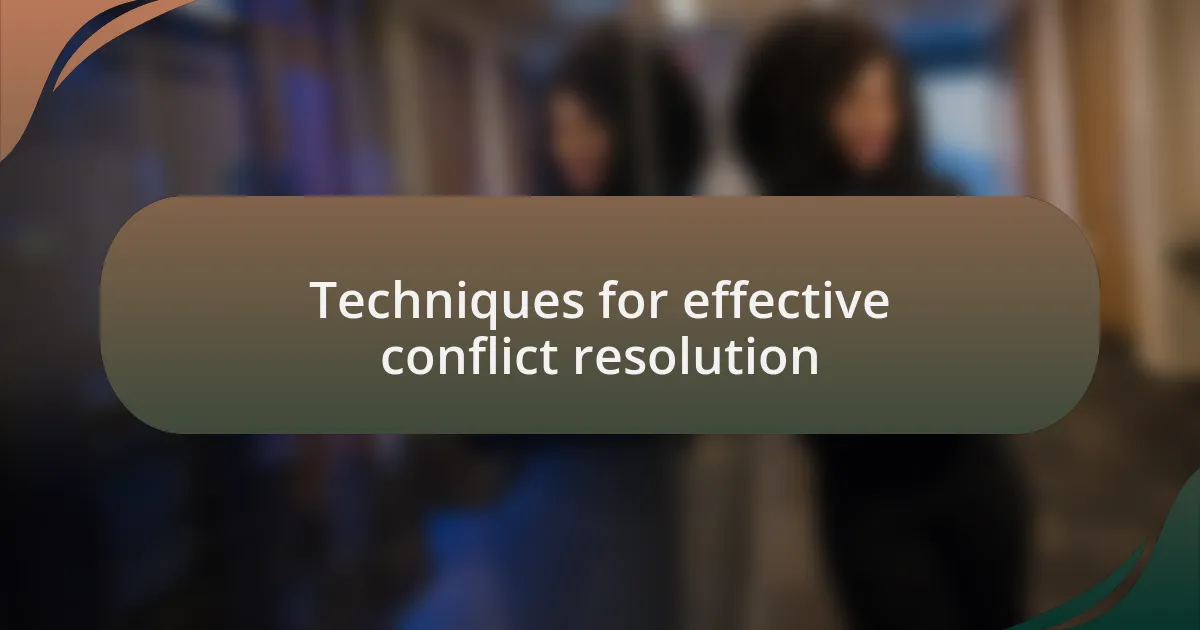
Techniques for effective conflict resolution
When it comes to effective conflict resolution, active listening is a game-changer. In one instance, I was part of a negotiation where each party was adamant about their position. By taking the time to genuinely listen, we uncovered underlying concerns that were not initially expressed. This not only fostered trust but also allowed us to arrive at a mutually beneficial solution. Have you ever realized how simply hearing someone out can make them feel valued?
Another powerful technique is the use of mediation. I once facilitated a session between two colleagues who were in a constant state of disagreement. Instead of letting emotions cloud the discussion, I created a safe space where each person could voice their feelings without interruption. By guiding them through a structured dialogue, they began to understand each other’s viewpoints, which transformed their conflict into collaboration. Isn’t it amazing how a neutral third party can clarify things?
Emphasizing shared goals often helps shift the focus from personal grievances to collective objectives. During a challenging project, my team faced a significant disagreement over the approach to take. By redirecting our conversation to our primary goal—delivering quality results—we were able to set aside individual differences. I witnessed firsthand how this technique not only resolved the conflict but also strengthened our team’s bond. Have you found that reminding people of a common mission can really align efforts?
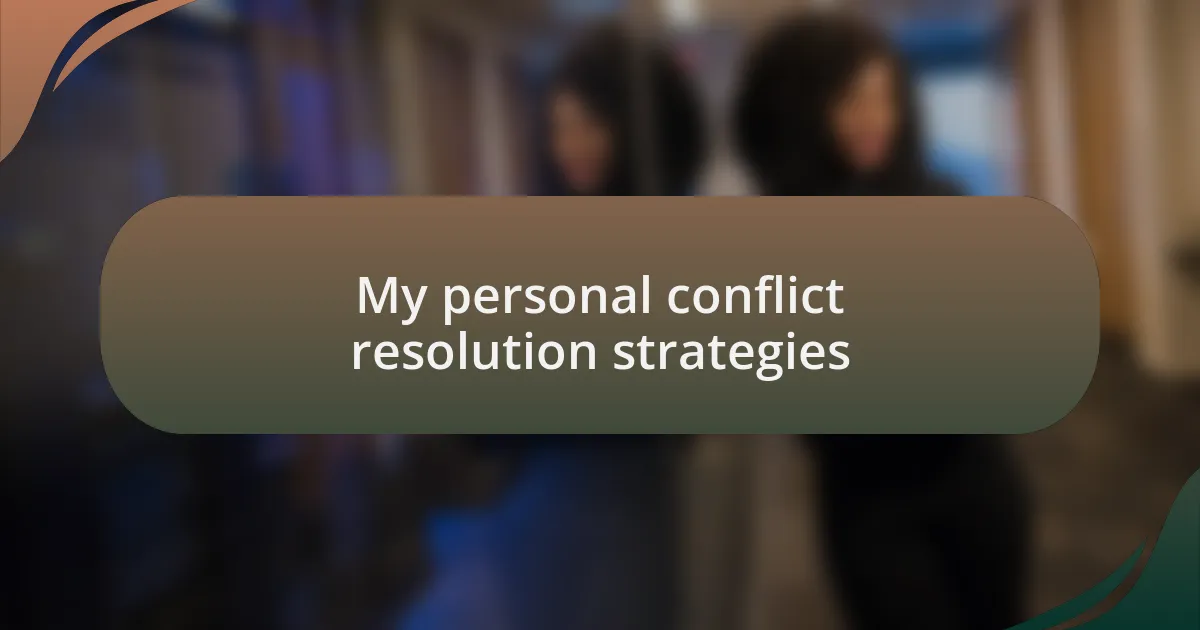
My personal conflict resolution strategies
One strategy I often employ is to take a step back and assess the emotional landscape of the conflict. I remember a situation where I was caught in a heated debate with a client who felt unheard. Instead of responding impulsively, I paused briefly to reflect on their frustrations. This moment of introspection allowed me to approach the conversation with empathy, ultimately leading to a more productive dialogue. Have you ever noticed how stepping back can help you gain clarity?
Another effective method I utilize is the power of storytelling during discussions. I once faced a conflict with a teammate who was resistant to my ideas. To break the tension, I shared a personal experience that highlighted the benefits of flexibility and collaboration. Surprisingly, my story resonated with them and opened the door for a much more constructive conversation. While facts are essential, isn’t it incredible how narratives can humanize a disagreement?
Finally, I always strive to maintain a solution-oriented mindset. In my early career, a project went south due to miscommunication, leading to blame and finger-pointing. Instead of getting mired down in what went wrong, I directed the team’s energy toward brainstorming ways to recover. This shift in focus not only diffused the tension but also reignited our commitment to complete the project successfully. How often do you find that changing the narrative from problem to solution can reshape a team’s dynamics?
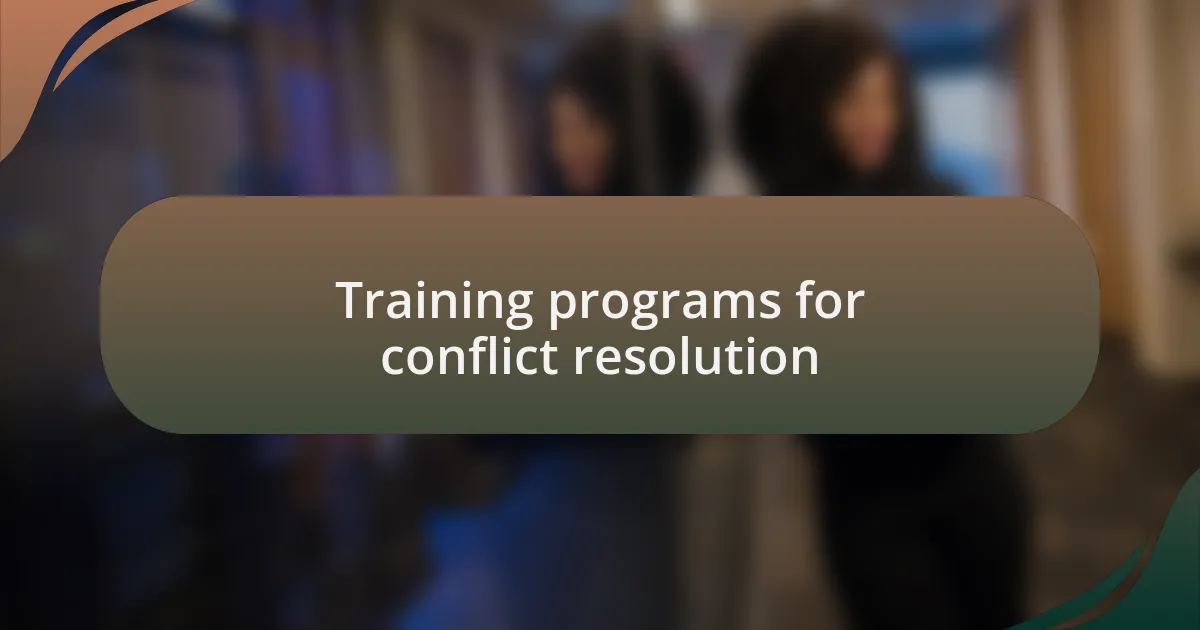
Training programs for conflict resolution
Training programs for conflict resolution can vary widely in approach, but what’s crucial is their ability to foster a culture of open communication. I remember attending a workshop where one of the key exercises involved role-playing common workplace scenarios. This immersive experience helped me understand not only my triggers but also how my colleagues perceived conflicts. Have you ever realized how stepping into someone else’s shoes can lead to remarkable insights?
In another training, we focused on developing active listening skills. Participants were paired and tasked with sharing their perspectives on a challenging situation while the other practiced reflective listening. I found this particularly enlightening; it made me aware of how often I was ready to respond rather than truly hearing the other person. Isn’t it fascinating how simple listening can transform the dynamics of a conversation?
Most importantly, conflict resolution training should emphasize emotional intelligence. In one poignant session, we explored how emotions affect our decision-making. I remember me sharing a story of a time I let frustration cloud my judgment, leading to an unnecessary escalation. That discussion underscored the value of recognizing and managing those emotions, creating a safer space for resolution. How often do we overlook the emotional undercurrents that can drive a conflict? Understanding them is essential for constructive outcomes.